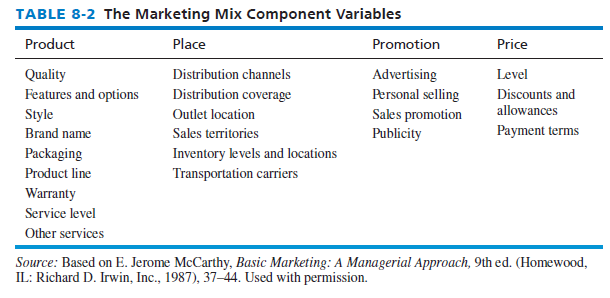Market segmentation and product positioning rank as marketing’s most important contributions to strategic management. Market segmentation can be defined as the subdividing of a market into distinct subsets of customers according to needs and buying habits. For example, eBay recently initiated a new market segmentation strategy to target consumers under 18 years old. “We’re definitely looking at ways to legitimately bring younger people in,” said Devin Wenig at eBay. “We won’t allow a 15-year-old unfettered access to the site. We would want a parent, an adult, as a ride-along. But the age 18 and up group [is] an increasingly savvy and desirable consumer segment for us.”
Market segmentation is important in strategy implementation for at least three major reasons. First, strategies such as market development, product development, market penetration, and diversification require increased sales through new markets and products. To implement these strategies successfully, new or improved market-segmentation approaches are required. Second, market segmentation allows a firm to operate with limited resources because mass production, mass distribution, and mass advertising are not required. Market segmentation enables a small firm to compete successfully with a large firm by maximizing per-unit profits and per-segment sales. And third, market segmentation decisions directly affect marketing mix variables: product, place, promotion, and price, as indicated in Table 8-2. Geographic and demographic bases for segmenting markets are the most commonly employed, as illustrated in Table 8-3.

Evaluating potential market segments requires strategists to determine the characteristics and needs of consumers, to analyze consumer similarities and differences, and to develop consumer group profiles. Segmenting consumer markets is generally much simpler and easier than segmenting industrial markets, because industrial products, such as electronic circuits and forklifts, have multiple applications and appeal to diverse customer groups.
Segmentation is a key to matching supply and demand, which is one of the thorniest problems in customer service. Segmentation often reveals that large, random fluctuations in demand actually consist of several small, predictable, and manageable patterns. Matching supply and demand allows factories to produce desirable levels without extra shifts, overtime, and subcontracting. Matching supply and demand also minimizes the number and severity of stock-outs. The demand for hotel rooms, for example, can be dependent on foreign tourists, businesspersons, and vacationers. Focusing separately on these three market segments, however, can allow hotel firms to more effectively predict overall supply and demand.
Banks now are segmenting markets to increase effectiveness. “You’re dead in the water if you aren’t segmenting the market,” observes Anne Moore, president of a bank consulting firm in Atlanta. The Internet makes market segmentation easier today because consumers naturally form “communities” on the Web.
To aid in segmenting markets and targeting specific groups of customers, companies commonly tag each of their active customers with three “retention” values:
- Tag 1: Is this customer at high risk of canceling the company’s service? One of the most common indicators of high-risk customers is a drop off in usage of the company’s service. For example, in the credit card industry this could be signaled through a customer’s decline in spending on his or her card.
- Tag 2: Is this customer worth retaining? This determination boils down to whether the postretention profit generated from the customer is predicted to be greater than the cost incurred to retain the customer. Customers need to be managed as investments.
- Tag 3: What retention tactics should be used to retain this customer? For customers who are deemed “save-worthy,” it is essential for the company to know which save tactics are most likely to be successful. Tactics commonly used range from providing “special” customer discounts to sending customers communications that reinforce the value proposition of the given service.5


The idea with retention-based segmentation is to examine and compare the attributes of active customers with the attributes of prior customers in order to better target potential customers with similar attributes. Using the theory that “birds of a feather flock together,” the approach is based on the assumption that active customers will have similar retention outcomes as those of their comparable predecessor. This whole process is possible through business analytics or data mining.
People all over the world are congregating into virtual communities on the web by becoming members, customers, and visitors of websites that focus on an endless range of topics. People essentially segment themselves by nature of the websites that comprise their “favorite places,” and many of these websites sell information regarding their “visitors.” Businesses and groups of individuals all over the world pool their purchasing power in websites to get volume discounts. Through its Connect feature, Facebook uses a type of mobile advertising that targets consumers based on the apps they use from their phones. Connect lets users log into millions of websites and apps with their Facebook identity, so the company then targets ads based on that data. Facebook can also track what people do on their apps. Google uses similar means to gather (and sell) market segmentation data.
Source: David Fred, David Forest (2016), Strategic Management: A Competitive Advantage Approach, Concepts and Cases, Pearson (16th Edition).

You are a very smart person!